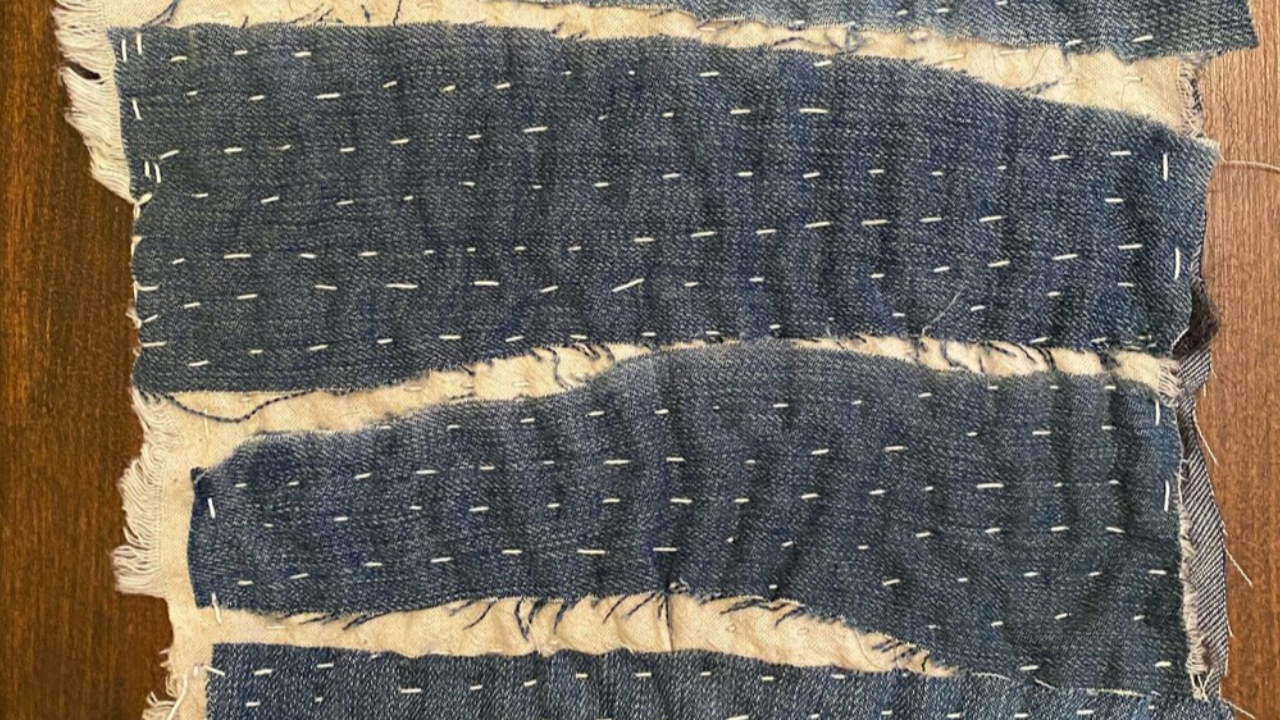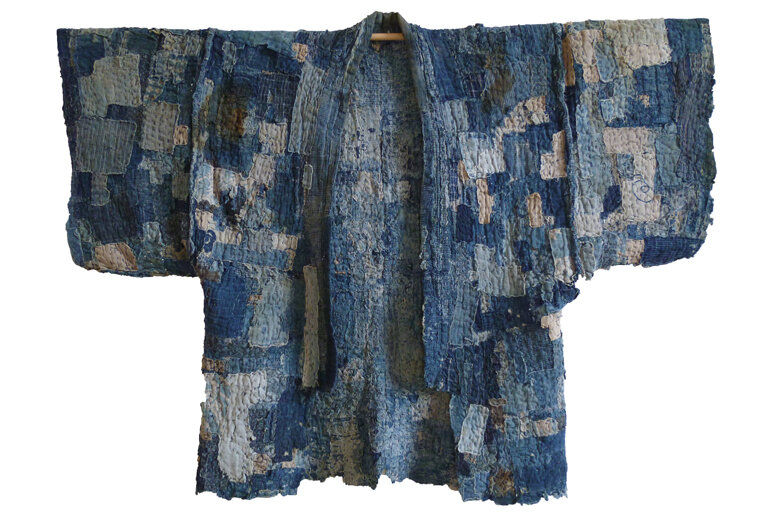What is boro stitching?
May 08, 2020
The recent trends for patching and mending our clothes have derived from the Japanese country crafts ‘boro’ and ‘sashiko’. For some, these terms are interchangeable, however, they fall into two distinct categories.

Traditional boro kimono | image via Gerrie Congdon
Derived from the Japanese word boroboro, Boro when translated literally means “tattered or repaired”. This technique combines layers of fabric and running stitch, combining bits of old cloth to patch and mend textiles. These fabrics were made by repurposing carefully saved garment pieces and other handspun and indigo-dyed fabrics in order to extend their use.
This style of mending came about through necessity, as growing, spinning, weaving and dyeing the fabric (often hemp) was time consuming, and as a consequence the cloth was treasured and recycled. Cotton was not common in Japan until the twentieth century, so when a kimono or futon cover got thin, it was carefully patched using boro stitching. Makers carefully mended these textiles, repairing the same item many times over many generations.
Boro evolved as a domestic craft in Japan during the Edo era (1615 - 1868) although the origins have been lost in time. Born out of necessity boro cloth was used and worn out, so very little early work remains, and boro garments would be handed down through many generations of impoverished rural families. For many years boro repaired clothing was considered to be shameful because it was a reminder of their impoverished past. Today, boro textiles are regarded as works of art, and it is often the reverse side that is prized for its spontaneous and abstract qualities.
I am pleased that this style of repair has regained popularity. It is a craft that anyone can attempt and now it contradicts our current fast fashion trends where inexpensive clothing is produced rapidly (often poorly made, using cheap fabrics and impoverished labour) by mass-market retailers in response to the latest trends which are designed to be consumed then disposed of as the styles change.
I have found the act of mending our much treasured clothes goes well beyond repairing the physical cloth. By making the space and time we also mend our psychological wellbeing and this process can also physically recharge us. The act of mending provides time for contemplation and a moment to connect with the material object. And investing our precious time means we treasure and appreciate our garments.
If you would like to see more boro inspired repairs visit me on instagram @zenstitching

